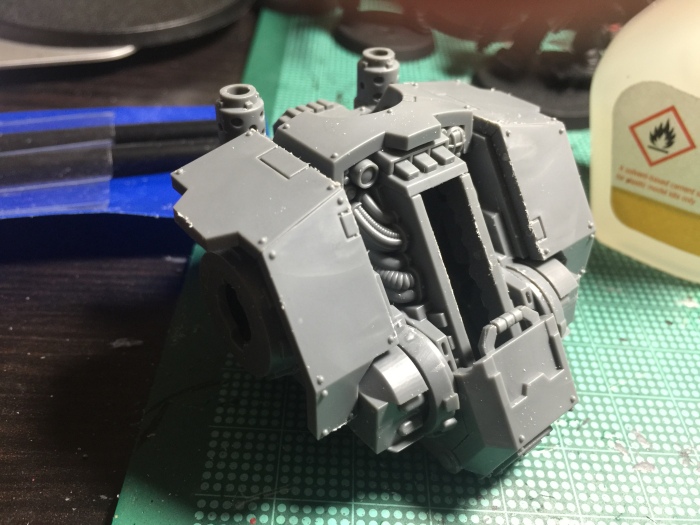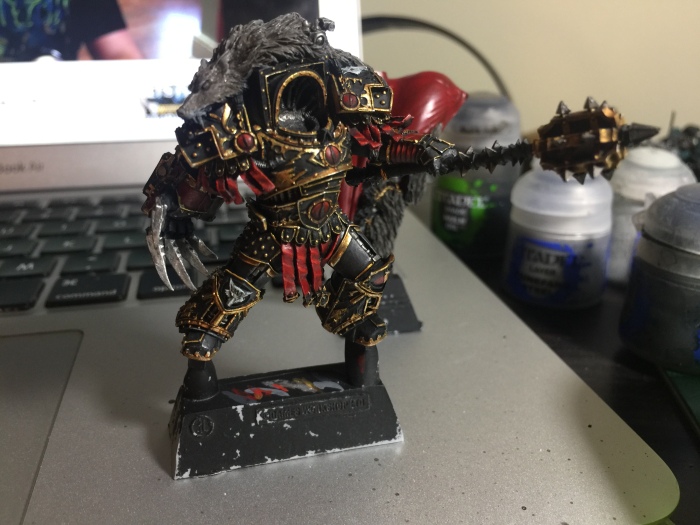
I don’t know how many of you have noticed, but Games Workshop just released more Space Marine miniatures, including a new dreadnought.
I bought one. Hard to believe I bought more Space Marine stuff, huh? Despite having the same reservations towards the Redemptor that I had towards the Primaris (they’re trouncing decades of established lore and imagery! It’s expensive! It looks horrendous! WAAAAH!) I’ve come to realize that it is indeed a wonderful miniature. Much more digital ink shall be spilled on these pages regarding my opinions of it (and the work I’ve done to make it look a little better, in my opinion). But first I’d like to bring to your attention an interesting building/hobby development that I’ve noticed in the kit.
In the first picture above you’ll note the left side of the Dreadnought’s chassis needs the exterior armor glued on. On the hobby mat next to it are the two pieces which make up the armor. See below for a closer look at their undersides:

Note the two tabs on each plate of armor. Note also the two tiny male and female nubs on the two bits. The larger tabs line up with the slots on the chassis, while the two nubs line up with each other in order to ensure the bits are aligned.

The end result is above – a perfectly aligned, perfectly placed couple of bits of armor. This design element is repeated all over the kit, with tabs and nubs placed in strategic locations to ensure everything goes together as it should.
Is this a new innovation? Are Games Workshop the first to implement it in their kits? Does it keep the Redemptor from looking like a pot-bellied Robocop reject? No on all counts. But Games Workshop have made a lot of strides in a lot of different areas over the past year or so, and this is just another one of the small quality-of-life improvements they have made that have contributed to their stellar past year.






